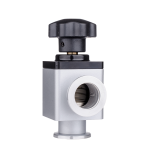
General Procedures for Vacuum Valve Maintenance
SaveSavedRemoved 0
Deal Score0
- When the vacuum valve is dismantled, use steel characters on the valve and the flange connected to the valve, mark the maintenance number, and record the working medium, working pressure and working temperature of the valve, so that the appropriate materials are selected for repair.
- When repairing the valve, it is required to carry out in a clean environment. First clean the outer surface of the valve, or blow with compressed air or wash with kerosene. But remember the nameplate and other signs. Check the appearance of damage and make records. Then disassemble the other parts of the valve, clean with kerosene (do not use gasoline to avoid fire), check the damage of other parts, and make a record.
- Perform strength test on the valve body and bonnet. If it is a high-pressure valve, non-destructive testing is also required, such as wave testing and x-ray testing.
- The red ring powder can be used to check the seal ring, and the degree of fit of the valve seat and the gate (valve). Inspect the valve stem for bending, corrosion, and thread wear. Check the stem nut for wear.
- Deal with the problems detected. Valve body repairswelding defects. Surfacing or renewing seals. Straighten or replace the valve stem. Repair other parts that should be repaired; cannot be replaced by the repairer.
- Reassemble the valve. When assembling, all gaskets and packages must be replaced.






